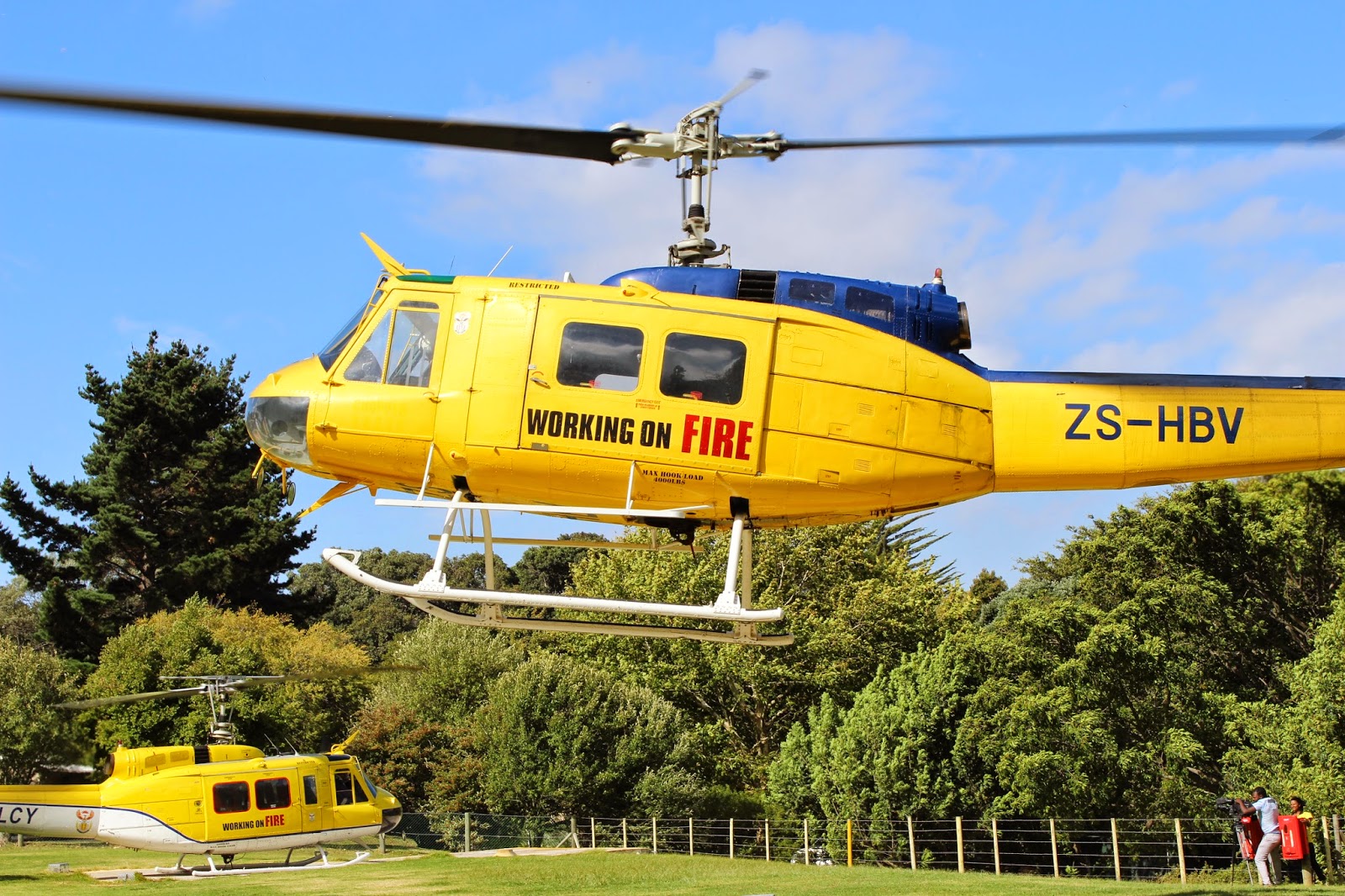The run away bush fires that burned for five days during March of this year destroying over 5500 hectares of vegetation on the slopes of the Table Mountain National Park was presumed to have been started by reckless persons frequenting the trails in the mountains skirting False Bay on the southern Cape Peninsula.
Fanned by seasonally harsh summer winds, tinder dry vegetation fueled the fires smothering the skies over Cape Town in plumes of stifling smoke.
Several homes including one magnificent new house which the owners were due to take possession of were caught in the path of the advancing fires that reduced the buildings to burnt out rubble and ash.

After the U.S. Military opted to replace the "HUEY" Helicopters with UH-60 Blackhawk Helicopters, some of those helicopters used during the Vietnam War became available for civilian operations. WORKING on FIRE (WoF) a South African parastatal company acquired Fifteen of these BELL 205 helicopters to be used in suppressing Bush,Timber and Plantation fires.
Defined specifically as military aircraft, BELL 205 UH-1H helicopters are listed on the SA CAA register to operate under Part 127 regulations as Utility Aircraft not engaged in the carriage of fare paying passengers or the carriage of deck loaded cargo.
WORKING on FIRE (W.o.F) is a government funded, job creative initiative focussing on Integrated Fire Management in S.A.

Many of the Fire Suppression Crews are persons recruited from marginalised communities within
South Africa. These fire crews are trained in fire prevention and fire suppression skills.
These are the heroes that faced up to and fought the fires that inevitably destroyed thousands of hectares of natural vegetation.South Africa. These fire crews are trained in fire prevention and fire suppression skills.
The primary function of the helicopters is to ferry the fire fighters onto the slopes of the mountain who then re direct the course of the flames and bring the fires under control.
Only once the ground crews are placed into position on the mountains will the helicopters begin dumping water along the fire line with a mixture of water charged with chemical fire retardants to help cool the flames.
 |
| BELL 205 Pilot JOHN MITTELMEYER |
"This is the type of work a helicopter pilot does towards the end of his or her career" said JOHN MITTELMEYER who is among the group of BELL 205 Pilots that scooped over 2000 buckets of water from nearby Lakes, Dams and the Sea close to the fires.
"It's the type of flying that comes with real experience" he said, "requiring situational awareness and an instinctive ability to judge and anticipate the mood of a fire".
Typical of it's military pedigree, the Bell 205 had proven to be suited to the task of effectively performing these extremely hazardous and demanding Fire Suppression operations.






